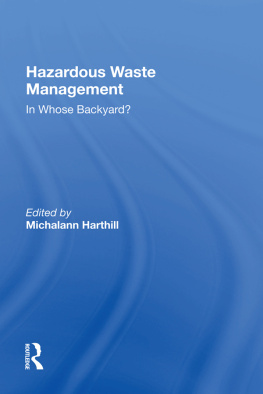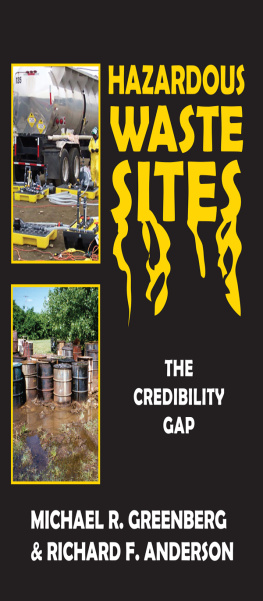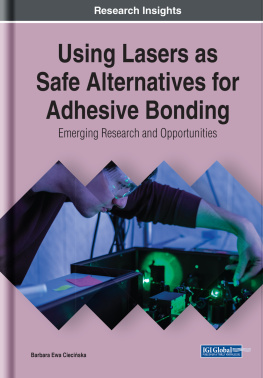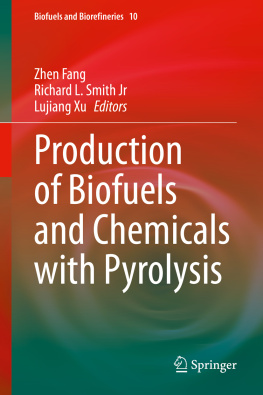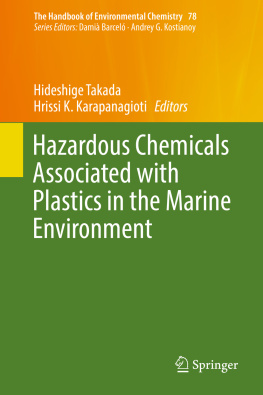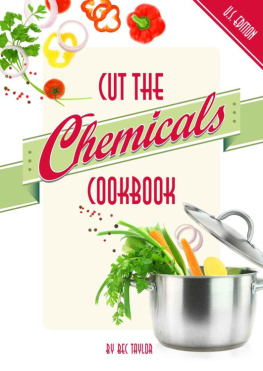
Table of Contents
List of Tables
- Azides
- Azo and Azoxy Compounds and Tetrazenes
- Boron Trifluoride and Inorganic Fluorides
- Carbamic Acid Esters
- Diisopropyl Fluorophosphate
- Dyes and Biological Stains
- Halogenated Compounds
- Heavy Metals
- Mercury
- Protease Inhibitors
- Sulfonyl Fluoride Enzyme Inhibitors
- Potassium Permanganate
- Fenton Reaction
- Ferrate
- Decontamination of Aqueous Solutions
- Photolysis Without Added Reactants (Uv Only)
- Photolysis With Hydrogen Peroxide (Uv/H2O2)
- Fenton Reaction
- Ozone
- Persulfate
- Miscellaneous Procedures
- Photolysis Without Added Reactants (Uv Only)
- Photolysis With Hydrogen Peroxide (UV/H2O2)
- Photo-Fenton Reaction
- Photolysis with Titanium Dioxide (UV/TiO2)
- Photolysis With Zinc Oxide (UV/ZnO)
- Photolysis With Ozone (UV/O3)
- Photolysis with Persulfate (UV/Persulfate)
- Photolysis With Chlorine (UV/Cl2)
- Appendix I
- Appendix II
Guide
Pages
DESTRUCTION OF HAZARDOUS CHEMICALS IN THE LABORATORY
Fourth Edition
George Lunn
Eric B. Sansone

Disclaimer
Extreme care has been taken with the preparation of this work.
However, neither the publisher nor the authors warrants the procedures against any safety hazards.
Neither the publisher nor the authors shall be held responsible or liable for any damages resulting in connection with or arising from the use of any information in this book.
The contents of this book do not necessarily reflect the views or policies of the Food and Drug
Administration, nor does the mention of trade names, commercial products, or organizations imply endorsement by the U.S. government.
This edition first published 2023
2023 John Wiley & Sons, Inc.
Edition History
1st edition (9780471510635) 1990, by George Lunn and Eric B. Sansone
2nd edition (9780471573999) 1994, by George Lunn and Eric B. Sansone
3rd edition (9780470487556) 2012, by George Lunn and Eric B. Sansone
All rights reserved. No part of this publication may be reproduced, stored in a retrieval system, or transmitted, in any form or by any means, electronic, mechanical, photocopying, recording or otherwise, except as permitted by law. Advice on how to obtain permission to reuse material from this title is available at http://www.wiley.com/go/permissions.
The right of George Lunn and Eric B. Sansone to be identified as the authors of this work has been asserted in accordance with law.
Registered Office
John Wiley & Sons, Inc., 111 River Street, Hoboken, NJ 07030, USA
Editorial Office
111 River Street, Hoboken, NJ 07030, USA
For details of our global editorial offices, customer services, and more information about Wiley products visit us at www.wiley.com.
Wiley also publishes its books in a variety of electronic formats and by print-on-demand. Some content that appears in standard print versions of this book may not be available in other formats.
Trademarks: Wiley and the Wiley logo are trademarks or registered trademarks of John Wiley & Sons, Inc. and/or its affiliates in the United States and other countries and may not be used without written permission. All other trademarks are the property of their respective owners. John Wiley & Sons, Inc. is not associated with any product or vendor mentioned in this book.
Limit of Liability/Disclaimer of Warranty
In view of ongoing research, equipment modifications, changes in governmental regulations, and the constant flow of information relating to the use of experimental reagents, equipment, and devices, the reader is urged to review and evaluate the information provided in the package insert or instructions for each chemical, piece of equipment, reagent, or device for, among other things, any changes in the instructions or indication of usage and for added warnings and precautions. While the publisher and authors have used their best efforts in preparing this work, they make no representations or warranties with respect to the accuracy or completeness of the contents of this work and specifically disclaim all warranties, including without limitation any implied warranties of merchantability or fitness for a particular purpose. No warranty may be created or extended by sales representatives, written sales materials or promotional statements for this work. The fact that an organization, website, or product is referred to in this work as a citation and/or potential source of further information does not mean that the publisher and authors endorse the information or services the organization, website, or product may provide or recommendations it may make. This work is sold with the understanding that the publisher is not engaged in rendering professional services. The advice and strategies contained herein may not be suitable for your situation. You should consult with a specialist where appropriate. Further, readers should be aware that websites listed in this work may have changed or disappeared between when this work was written and when it is read. Neither the publisher nor authors shall be liable for any loss of profit or any other commercial damages, including but not limited to special, incidental, consequential, or other damages.
Library of Congress Cataloging-in-Publication Data
Names: Lunn, George, 1950- editor. | Sansone, E. B. (Eric Brandfon), 1939- editor.
Title: Destruction of hazardous chemicals in the laboratory / George Lunn, FDA, Baltimore, USA, Eric B. Sansone, Hingham, USA.
Description: Fourth edition. | Hoboken, NJ, USA : Wiley, 2023. | Includes bibliographical references and index.
Identifiers: LCCN 2022036312 (print) | LCCN 2022036313 (ebook) | ISBN 9781119848806 (cloth ; acidfree paper) | ISBN 9781119848813 (adobe pdf) | ISBN 9781119848844 (epub)
Subjects: LCSH: Hazardous wastesSafety measures. | Chemical laboratoriesSafety measures. | ChemicalsSafety measures.
Classification: LCC TD1050.S24 L86 2023 (print) | LCC TD1050.S24 (ebook) | DDC 628.4/2dc23/eng/20220906
LC record available at https://lccn.loc.gov/2022036312
LC ebook record available at https://lccn.loc.gov/2022036313
Cover Design: Wiley
Cover Image: Medioimages/Getty Images
Preface
This is the fourth edition of Destruction of Hazardous Chemicals in the Laboratory, originally published in 1990 with a second edition in 1994 and a third in 2012. Many of the monographs from the third edition that deal with specific chemicals have been modified to a greater or lesser extent to take into account recent developments in the literature. Methods for the destruction of pharmaceuticals have been similarly modified and expanded.
We have also greatly expanded a section that deals with nonspecific methods for the destruction of hazardous organic chemicals. The methods in this section have been divided into General Procedures and Photolytic Procedures with many subheads (see the Table of Contents). They may be of use when no procedures for destroying a particular compound have been reported. In such cases, the precautions that must be taken when dealing with previously untried procedures are particularly important. These procedures are illustrated with many examples drawn from the literature.
Next page

